To make a jeep wrangler faster, you can consider installing aftermarket performance parts or upgrading the engine. These modifications can enhance the vehicle’s horsepower and acceleration, improving its overall speed and performance.
Introducing modifications to your jeep wrangler can significantly increase its speed and performance. By installing aftermarket performance parts or upgrading the engine, you can boost the vehicle’s horsepower and acceleration. These modifications can include adding a cold air intake, upgrading the exhaust system, installing a performance chip or tuner, and even swapping out the engine for a more powerful one.
These enhancements can effectively make your jeep wrangler faster and enhance your overall driving experience. However, it is crucial to conduct thorough research and consult with professionals to ensure the modifications are compatible with your vehicle and comply with local regulations.
In this article we will explore step by step how to make a jeep wrangler faster.
So lets start
How To Make Jeep Wrangler Faster
If you own a Jeep Wrangler, you might love its off-road capabilities and rugged style. But what if you want to make it faster on the road? Maybe you want to impress your friends, win a race, or just have some fun.
Well, there are some ways to boost your Jeep’s speed and performance without breaking the bank or ruining its charm. Here are some tips for making your Jeep Wrangler faster.
One of the easiest and cheapest ways to make your Jeep Wrangler faster is to install a performance chip or tuner. This is a device that plugs into your Jeep’s computer and modifies its settings to optimize the engine’s power and efficiency.
You can choose from different modes and levels of performance, depending on your needs and preferences. A performance chip or tuner can increase your horsepower, torque, fuel economy, and throttle response. You can find a variety of options online, such as the RaceChip Tuner1 or the Superchips Flashpaq Tuner.
Another way to make your Jeep Wrangler faster is to upgrade your air intake system. This is the part that draws air into the engine and mixes it with fuel to create combustion.
By installing a cold air intake system, you can improve the airflow and reduce the restrictions in the engine. This will result in more oxygen reaching the cylinders, which will lead to more power and acceleration.
A cold air intake system also draws cooler and denser air from outside the engine bay, which is better for combustion than the hot and thin air inside. You can find various cold air intake systems online, such as the K&N Cold Air Intake Kit or the Airaid Cold Air Intake System.
A third way to make your Jeep Wrangler faster is to upgrade your exhaust system. This is the part that expels the exhaust gases from the engine and out of the tailpipe.
By installing a performance exhaust system, you can improve the exhaust flow and reduce the back pressure in the engine. This will allow the engine to breathe easier and produce more power and torque.
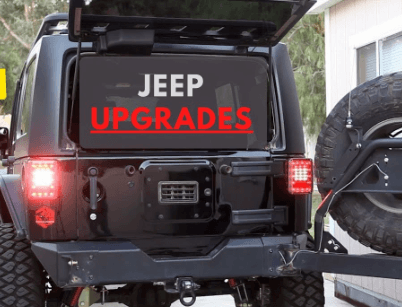
A performance exhaust system also gives your Jeep a louder and more aggressive sound, which can be appealing to some drivers. You can find different types of performance exhaust systems online, such as the Magnaflow Performance Exhaust System or the Borla Performance Exhaust System.
There are other ways to make your Jeep Wrangler faster, such as installing a stroker kit, upgrading your spark plugs, changing your gears, or adding a supercharger or turbocharger.
However, these methods are more expensive, complicated, and risky, and might require professional installation and maintenance. They might also affect your Jeep’s warranty, reliability, or emissions.
Therefore, you should do some research and consult an expert before attempting any of these modifications.
Making your Jeep Wrangler faster can be a fun and rewarding project, but it also requires some caution and responsibility. You should always follow the manufacturer’s instructions and specifications when installing any parts or devices on your Jeep.
You should also obey the traffic laws and drive safely on the road. Remember that speed is not everything, and that your Jeep Wrangler is already an awesome vehicle that can handle any terrain and adventure.
Why Turbocharging Your Jeep Wrangler Is A Game-Changer
If you’re a jeep wrangler enthusiast seeking to take your off-roading experience to the next level, turbocharging your vehicle could be the game-changer you’ve been looking for. Adding a turbocharger to your jeep wrangler can provide numerous benefits, including increased horsepower and torque, enhanced acceleration and top speed, improved off-road performance, and better fuel efficiency.
Increased Horsepower And Torque:
- Turbocharging your jeep wrangler significantly increases its power output, delivering a substantial boost in horsepower and torque.
- This upgrade can turn your wrangler into a beast on the road and allow it to tackle challenging terrains with ease.
- With the increased power, you’ll have enough muscle to conquer any obstacle standing in your way, making your off-road adventures even more thrilling.
Enhanced Acceleration And Top Speed:
- The addition of a turbocharger improves the acceleration capabilities of your jeep wrangler, allowing you to go from 0 to 60 mph in a shorter time.
- This means that you can enjoy quicker bursts of speed, ideal for merging onto highways or overtaking slower vehicles on the trails.
- Additionally, turbocharging your wrangler can increase its top speed, giving you the opportunity to push your vehicle to its limits and experience the adrenaline rush that comes with it.
Improved Off-Road Performance:
- One of the significant advantages of turbocharging your jeep wrangler is the improvement in off-road performance.
- The increased horsepower and torque provided by the turbocharger give your wrangler the extra power it needs to tackle steep inclines, muddy terrains, and deep water crossings.
- With turbocharging, you’ll have better control and maneuverability, allowing you to navigate rough terrains comfortably and confidently.
Better Fuel Efficiency:
- Contrary to popular belief, turbocharging your jeep wrangler can actually improve its fuel efficiency.
- The turbocharger increases the air intake, resulting in more efficient and cleaner combustion, which ultimately leads to better fuel economy.
- With better fuel efficiency, you can go on longer off-road adventures without worrying about fuel consumption, making it a practical upgrade for both performance and economy-minded wrangler enthusiasts.
Turbocharging your jeep wrangler is a game-changer that can transform your driving experience. With increased horsepower and torque, enhanced acceleration and top speed, improved off-road performance, and better fuel efficiency, you’ll have a jeep that truly stands out on and off the road.
So, why wait? Take your wrangler to the next level and enjoy the thrilling capabilities that turbocharging can offer.
Selecting The Right Turbocharger For Your Jeep Wrangler
Considerations For Turbocharger Selection
Choosing the right turbocharger for your jeep wrangler is a crucial step in making it faster. Here are some key considerations to keep in mind:
- Engine compatibility and power goals:
- Before selecting a turbocharger, assess the compatibility of your engine. Turbochargers are designed for specific engines, so it’s essential to find one that matches your wrangler’s engine model.
- Determine your power goals. Are you looking for a slight boost in horsepower or a significant increase? Knowing your power targets will help you select a turbocharger that meets your needs.
- Budget and aftermarket options:
- Consider your budget when selecting a turbocharger. Turbocharger prices vary depending on factors such as brand, quality, and performance capabilities. Determine how much you are willing to invest in this upgrade.
- Explore aftermarket options. In addition to the original equipment manufacturer (oem) turbochargers, there is a wide range of aftermarket turbochargers available. These may offer better performance and customization options for your jeep wrangler.
- Exhaust system modifications:
- Upgrading the exhaust system can enhance the performance of your turbocharged jeep wrangler. To fully optimize the turbocharger’s capabilities, consider making modifications such as installing a high-flow catalytic converter or a larger diameter exhaust pipe.
- The improved exhaust flow reduces backpressure, allowing the turbocharger to function more efficiently. This, in turn, enhances engine performance and provides a noticeable increase in horsepower and torque.
By considering your engine’s compatibility, power goals, budget, and aftermarket options, as well as making necessary exhaust system modifications, you can select the perfect turbocharger for your jeep wrangler. Ensure to consult with an expert or do thorough research to make an informed decision.
Remember, it’s essential to choose a turbocharger that aligns with your specific requirements and adhere to your vehicle’s capabilities.
Installing A Turbocharger: A Step-By-Step Guide
If you’re looking to boost the performance of your jeep wrangler and make it faster, installing a turbocharger is a great option. A turbocharger can significantly increase the horsepower and torque of your vehicle, giving you that extra power and acceleration you crave.
To help you with the installation process, we’ve put together this step-by-step guide. Let’s dive in!
Gathering The Necessary Tools And Equipment
Before you begin installing a turbocharger, make sure you have all the required tools and equipment. Here’s a list of what you’ll need:
- Socket set
- Wrenches
- Screwdrivers
- Torque wrench
- Turbocharger kit
- Intercooler kit
- Fuel system upgrade components
Preparing The Jeep Wrangler For Installation
Before you start installing the turbocharger, it’s important to prepare your jeep wrangler for the process. Here are the key steps:
- Disconnect the negative terminal of the battery to ensure safety during the installation process.
- Remove the air cleaner assembly and disconnect any sensors or electrical connections in the way.
- Remove the existing exhaust manifold and disconnect the turbocharger drain line and oil feed line.
Engine Inspection And Modifications
Next, it’s crucial to inspect the engine and make any necessary modifications to accommodate the turbocharger. Here’s what you should do:
- Inspect the engine for any existing issues or worn-out components.
- Check the pistons, cylinder head, and valves for any signs of damage or wear.
- Upgrade the head gasket and replace any weak or faulty parts to handle the increased power and pressure.
Upgrading Fuel System And Intercooler
To ensure proper fuel delivery and cooling, upgrading the fuel system and installing an intercooler is essential. Consider the following steps:
- Upgrade the fuel injectors and fuel pump to support the increased air and fuel demands.
- Install a larger intercooler to cool down the compressed air before it enters the engine.
Turbocharger Installation Process
Now, let’s move on to the turbocharger installation process. Here’s how it should be done:
- Carefully mount the turbocharger onto the engine block, ensuring a secure fit.
- Attach the turbocharger oil feed line and drain line to their respective connections.
- Install the turbocharger wastegate and connect it to the exhaust system.
Mounting The Turbocharger
Properly mounting the turbocharger is crucial for optimal performance and longevity. Follow these steps:
- Securely attach the turbocharger to the exhaust manifold, using the provided hardware.
- Take care to align the exhaust manifold and turbocharger flanges correctly.
- Torque the bolts to the manufacturer’s specifications to ensure a tight seal.
Connecting And Routing Intercooler Piping
To complete the installation, you’ll need to connect and route the intercooler piping. Here’s what you should do:
- Connect the intercooler to the turbocharger outlet and the throttle body inlet.
- Ensure all connections are secure and free from any leaks.
- Properly route the intercooler piping, avoiding any sharp bends or obstacles that could restrict airflow.
Post-Installation Considerations And Testing
Congratulations on successfully installing a turbocharger on your jeep wrangler! However, a few more steps are necessary:
- Double-check all connections and fittings for secure attachment.
- Start the engine and let it warm up, inspecting for any signs of leaks or abnormal sounds.
- Take the vehicle for a test drive and monitor the performance to ensure everything is functioning correctly.
Remember, it’s crucial to follow the manufacturer’s instructions and guidelines throughout the installation process. And if you’re not confident in your abilities, it’s always best to seek professional assistance. Enjoy the newfound power and exhilaration that a turbocharger brings to your jeep wrangler!
Tuning Your Jeep Wrangler’S Engine For Maximum Performance
After installing a turbocharger in your jeep wrangler, you may be excited about the extra power it brings. However, to truly optimize your vehicle’s performance, it’s crucial to tune the engine. Engine tuning involves making adjustments to various parameters to achieve maximum output and ensure optimal functionality.
In this section, we will explore the importance of engine tuning after turbocharger installation, the benefits of working with a professional tuner, the significance of adjusting the air-fuel mixture and ignition timing, and the advantages of monitoring engine parameters with a performance tuner.
Importance Of Engine Tuning After Turbocharger Installation
- Fine-tuning your jeep wrangler’s engine after installing a turbocharger is essential for unlocking its full potential.
- Engine tuning enables you to maximize power output, improve fuel efficiency, and enhance overall performance.
- Proper tuning ensures that your turbocharged engine operates optimally, minimizing the risk of engine damage and ensuring longevity.
Working With A Professional Tuner
- Collaborating with an experienced and knowledgeable professional tuner is highly recommended.
- A professional tuner possesses the expertise to make precise adjustments based on your jeep wrangler’s specific requirements.
- They have the necessary tools and software to accurately analyze your engine’s performance and identify areas that can be optimized.
Adjusting Air-Fuel Mixture And Ignition Timing
- Correctly adjusting the air-fuel mixture is crucial to optimize power delivery and fuel efficiency.
- An optimal air-fuel ratio ensures efficient combustion, minimizing the risk of engine knocks and improving performance.
- Adjusting the ignition timing helps in synchronizing the combustion process, leading to improved power output and throttle response.
Monitoring Engine Parameters With A Performance Tuner
- Using a performance tuner allows you to monitor and adjust various engine parameters in real-time.
- With a performance tuner, you can keep track of vital metrics such as boost pressure, air-fuel ratio, and engine temperature.
- Monitoring these parameters enables you to fine-tune your engine for optimal performance, ensuring you make the most of your turbocharged setup.
By tuning your jeep wrangler’s engine after installing a turbocharger, you can unlock its full potential and achieve maximum performance. Working with a professional tuner, adjusting the air-fuel mixture and ignition timing, and utilizing a performance tuner for monitoring engine parameters are essential steps in the process.
Remember, proper tuning not only enhances power and efficiency but also promotes the longevity and reliability of your jeep’s engine. So, don’t overlook the importance of engine tuning and make the most of your turbocharged jeep wrangler.
Upgrading Jeep Wrangler’S Drivetrain For Enhanced Speed
Strengthening The Transmission And Driveline Components
When it comes to making your jeep wrangler faster, one of the most important aspects to consider is upgrading the transmission and driveline components. By strengthening these key areas, you can enhance speed and overall performance. Here are some key points to keep in mind:
- Upgrade the transmission: Upgrading your jeep wrangler’s transmission is a great way to improve speed. Consider installing a performance transmission such as a manual or automatic transmission with a higher torque capacity.
- Install a stronger driveshaft: By upgrading your jeep’s driveshaft, you can ensure that the power from your engine is efficiently transferred to the wheels. Look for aftermarket driveshafts made of stronger materials such as steel or aluminum.
- Upgrade the differentials: Upgrading your jeep’s differentials can significantly improve acceleration and overall speed. Consider installing a performance differential with a lower gear ratio to maximize power transfer to the wheels.
Choosing The Right Gears And Differential Ratio
Selecting the right gears and differential ratio for your jeep wrangler is crucial when aiming to boost its speed. Here are some key points to consider:
- Gear ratio selection: Choosing the right gear ratio can have a significant impact on your jeep’s speed and acceleration. A lower gear ratio, such as 4.88 or 5.13, can provide better low-end torque and faster acceleration, while a higher gear ratio, like 3.73 or 4.10, offers better top speed and fuel efficiency.
- Limited-slip or locking differentials: Upgrading to limited-slip or locking differentials can greatly enhance your jeep’s off-road capabilities and speed. Limited-slip differentials allow more power to be transferred to the wheel with better traction, while locking differentials provide equal power distribution to both wheels.
- Consult an expert: To ensure you choose the right gears and differential ratio for your specific needs, it is always recommended to consult with a knowledgeable mechanic or jeep enthusiast who can provide expert advice based on your jeep’s model and modifications.
Upgrading The Clutch For Higher Torque Capacity
If you want to increase your jeep wrangler’s speed and torque capacity, upgrading the clutch is a worthwhile modification to consider. Here’s what you need to know:
- Choose a performance clutch: Opt for a performance clutch that offers higher torque capacity, allowing your jeep’s engine to transfer more power to the drivetrain. Look for clutches made from high-quality materials that can withstand the demands of higher horsepower and torque.
- Consider a hydraulic clutch: Upgrading to a hydraulic clutch system can provide better pedal feel and smoother engagement. Hydraulic clutches also offer greater adjustability and require less maintenance compared to traditional mechanical clutches.
- Match the clutch to your power upgrades: Make sure to choose a clutch that matches the power upgrades you’ve made to your jeep wrangler. If you’ve increased the horsepower and torque significantly, a high-performance clutch is essential to handle the added power.
By following these tips and upgrading your jeep wrangler’s drivetrain components, you can unleash its full potential for enhanced speed and performance. Remember to consult with experts and conduct thorough research to make informed decisions about which upgrades are best suited for your specific needs.
Enhancing Jeep Wrangler’S Suspension And Handling
Improving the suspension and handling of your jeep wrangler is crucial if you want to make it faster and enhance its off-road performance. With the right upgrades, you can achieve better control, increased stability, and improved maneuverability. Here are some key areas to focus on when enhancing your jeep wrangler’s suspension and handling:
Choosing The Right Suspension System For Speed And Off-Road Performance:
- Research and choose a suspension system specifically designed for both speed and off-road performance.
- Look for options that offer adjustable components, allowing you to customize your suspension based on your driving preferences.
- Consider upgrading to a long-arm suspension kit for better stability and control at high speeds.
- Opt for a suspension system with higher ground clearance to improve off-road capabilities.
- Ensure that the system you choose is compatible with your vehicle’s weight and intended use.
Upgrading Shocks, Springs, And Sway Bars:
- Invest in high-quality shocks that are designed to handle the demands of both on-road and off-road driving.
- Choose shocks with adjustable compression and rebound settings to maximize performance.
- Upgrade your springs to ones that offer better support and handling, especially when carrying heavy loads.
- Replace your factory sway bars with stiffer ones to reduce body roll and improve cornering stability.
- Consider adding sway bar disconnects to improve off-road articulation when needed.
Installing A Performance Steering Stabilizer:
- Install a performance steering stabilizer to reduce steering vibrations and improve overall handling.
- Opt for a stabilizer that features a larger diameter for increased stability.
- Look for options with adjustable settings to fine-tune your steering characteristics.
- Ensure that the steering stabilizer you choose is specifically designed for your jeep wrangler model.
- Consider upgrading other steering components, such as tie rods and drag links, for enhanced steering response.
Remember, when it comes to enhancing your jeep wrangler’s suspension and handling, it’s essential to choose the right components based on your desired driving style and off-road aspirations. Upgrading your suspension system, shocks, springs, sway bars, and installing a performance steering stabilizer will not only make your jeep faster but also significantly improve its overall performance and capabilities on and off the road.
So get out there, customize your jeep, and enjoy the thrill of an upgraded suspension and handling experience!
Safety Considerations And Precautions
Understanding The Limitations And Risks Associated With Increased Speed
When it comes to making your jeep wrangler faster, it’s important to understand that there are limitations and risks that come along with the need for speed. While upgrading your vehicle for more power and speed can be exciting, it’s crucial to prioritize safety considerations and take the necessary precautions.
Here are some key points to keep in mind:
- Know the capabilities of your vehicle: Before making any modifications, get familiar with the stock performance limitations of your jeep wrangler. Understanding the capabilities of your vehicle will help you make informed decisions about upgrades.
- Consider the impact on handling: Increasing your jeep’s speed may have an impact on its handling characteristics. Higher speeds may require more controlled maneuvers, so it’s essential to be prepared for any changes in steering response, stability, or suspension.
- Maintain balance and stability: Modifications that increase speed should be complemented by upgrades that enhance balance and stability. This can include upgraded suspension components, such as sway bars and control arms, to ensure your jeep can handle the additional power safely.
- Invest in performance-focused upgrades: Upgrading your jeep’s engine, transmission, and exhaust system can give you the desired boost in speed. However, it’s crucial to invest in quality parts that are specifically designed for your vehicle model and compatible with its systems.
Upgrading Brakes For Improved Stopping Power
When it comes to making your jeep wrangler faster, it’s equally important to ensure that it can come to a halt quickly and efficiently. Upgrading your brakes is essential to accommodate the increased speed and enhance your vehicle’s stopping power.
Here’s what you need to know:
- Choose high-performance brake pads: Upgrading your brake pads to high-performance options can significantly improve braking performance. Look for pads that offer increased friction and heat resistance to handle the demands of higher speeds.
- Consider upgrading rotors: Upgrading to slotted or drilled rotors can help dissipate heat more effectively, reducing the risk of brake fade during aggressive driving. These types of rotors also provide additional bite and better cooling, allowing for improved stopping power.
- Upgrade brake lines: Consider replacing your stock brake lines with braided stainless steel lines. These lines offer better brake feel and response, reducing the chances of spongy or delayed braking when pushing the limits of your jeep’s speed.
- Upgrade brake fluids: Opt for high-performance brake fluids with a higher boiling point. This will help prevent brake fade and maintain consistent braking performance even under extreme conditions.
Ensuring Proper Tire Selection And Inflation
Proper tire selection and inflation play a vital role in maximizing the performance and safety of your jeep wrangler, especially when aiming for increased speed. Here are some key considerations:
- Choose performance-oriented tires: Look for tires specifically designed for high-speed performance, such as summer or performance tires. These tires offer improved traction, handling, and stability, allowing you to safely push your jeep’s speed limits.
- Consider tire aspect ratio: Lower aspect ratio tires provide better handling and responsiveness, but they may sacrifice ride comfort. Strike a balance between performance and comfort based on your preferences and driving conditions.
- Ensure proper tire inflation: Maintaining the correct tire pressure is crucial for both safety and performance. Underinflated or overinflated tires can lead to compromised handling and increased risk of tire failure. Regularly check and adjust tire pressure according to the manufacturer’s recommendations.
- Rotate and replace tires regularly: To ensure even wear and optimal performance, regularly rotate your tires as recommended by the manufacturer. Additionally, replace worn-out tires promptly to maintain traction and control.
By understanding the limitations and risks associated with increased speed, upgrading your brakes for improved stopping power, and ensuring proper tire selection and inflation, you can make your jeep wrangler faster without compromising safety. Prioritizing safety considerations and taking necessary precautions will allow you to enjoy the thrill of a faster ride while keeping you and your passengers secure on the road.
Maintenance Tips For A Turbocharged Jeep Wrangler
Regularly Inspecting And Servicing The Turbocharger System
One of the key factors in keeping a turbocharged jeep wrangler running at its best is regular inspection and servicing of the turbocharger system. Here are some important aspects to consider:
- Check for any signs of wear or damage to the turbocharger components such as the compressor wheel and turbine shaft. If any issues are detected, it is recommended to seek professional assistance for repairs or replacements.
- Inspect the turbocharger housing for any oil leaks. Oil leaks can lead to poor performance and potential damage to the engine over time. If a leak is identified, it should be addressed promptly to prevent further complications.
- Clean the turbocharger regularly to remove any build-up of dirt or debris that may hinder its efficiency. This can be done using compressed air or a specific cleaning solution recommended by the manufacturer.
- Ensure the turbocharger is receiving adequate lubrication by checking the oil supply. Low oil levels can cause unnecessary strain on the turbocharger, resulting in reduced performance and potential damage.
- Keep an eye on the boost pressure levels. If you notice a significant drop in boost pressure, it may indicate an issue with the turbocharger system that requires immediate attention. Consult a professional mechanic to diagnose and resolve the problem effectively.
Monitoring Engine Oil And Coolant Levels
Maintaining optimum levels of engine oil and coolant is crucial for the overall performance and longevity of a turbocharged jeep wrangler. Here’s what you need to know:
- Check the engine oil level regularly and top up if necessary. Insufficient oil can lead to increased friction and heat, which can impact the turbocharger’s performance. Refer to the owner’s manual to determine the correct oil type and level for your vehicle.
- Keep a close eye on the coolant levels in the radiator and expansion tank. A turbocharged engine generates more heat, and coolant plays a vital role in regulating the temperature. Insufficient coolant can result in overheating and damage to the turbocharger and other engine components.
- Ensure the coolant is clean and free from contaminants to promote efficient heat transfer. If the coolant appears dirty or discolored, a flush and refill may be needed.
- Regularly inspect hoses and connections for any signs of leaks or damage. Faulty hoses can lead to coolant loss and adversely affect the turbocharger’s performance and overall engine health.
- If you notice any irregularities in the engine oil or coolant levels, address the issue promptly to prevent potential damage and maintain the turbocharged jeep wrangler’s optimal performance.
Performing Routine Maintenance On Intercooler And Intake System
The intercooler and intake system play vital roles in turbocharged engines by cooling the compressed air and delivering it to the engine for improved combustion. Here’s what you need to keep in mind:
- Regularly inspect the intercooler for any signs of damage or leaks. Dents, cracks, or bent fins can impede proper airflow and reduce the effectiveness of the turbocharged system. Replace or repair any damaged components promptly.
- Clean the intercooler periodically to remove any debris or contaminants that can accumulate and restrict airflow. You can use compressed air or a designated cleaning solution to ensure optimal performance.
- Check the intake system for any blockages or obstructions that might hinder the airflow. Keep the air filter clean and replace it when necessary to prevent the entry of dirt and debris into the turbocharged system.
- Inspect and tighten all clamps and connections within the intake system to ensure a secure and airtight fit. Leaks or loose connections can lead to loss of boost pressure and reduced performance.
- Following the manufacturer’s recommended maintenance schedule is essential for maintaining a turbocharged jeep wrangler’s performance. Adhering to routine maintenance tasks for the intercooler and intake system will help optimize power and ensure longevity.
A well-maintained turbocharged jeep wrangler can not only provide an exhilarating driving experience but also deliver enhanced performance. By regularly inspecting and servicing the turbocharger system, monitoring engine oil and coolant levels, and performing routine maintenance on the intercooler and intake system, you can make the most of your turbocharged jeep wrangler’s capabilities and enjoy its full potential for years to come.
Frequently Asked Questions On How To Make A Jeep Wrangler Faster
How Can I Make My Jeep Wrangler Faster?
To make your jeep wrangler faster, you can start by upgrading the air intake and exhaust systems for improved airflow. Additionally, installing a performance chip or tuner can optimize the engine’s performance. Upgrading the suspension and tires can also enhance acceleration and speed.
Is It Possible To Increase The Horsepower Of A Jeep Wrangler?
Yes, you can increase the horsepower of your jeep wrangler. Popular methods include adding a performance intake and exhaust, installing a supercharger or turbocharger, and upgrading the engine’s components. However, it is essential to work with a professional to ensure compatibility and proper installation.
Are There Any Fuel-Efficient Ways To Make A Jeep Wrangler Faster?
While improving fuel efficiency and increasing speed may seem contradictory, certain modifications can achieve both. Upgrading to a more efficient air filter and installing a retune can optimize fuel consumption while simultaneously improving performance. Additionally, maintaining proper tire pressure and avoiding excessive weight can further enhance fuel efficiency.
Conclusion
Upgrading the performance of your jeep wrangler can be an exciting and rewarding endeavor. By following the tips and techniques mentioned in this guide, you can make your jeep faster and more powerful. Start by optimizing the engine and improving airflow with the installation of a cold air intake and performance exhaust system.
Don’t forget to also upgrade your tires and suspension to enhance the overall handling capability of your vehicle. Additionally, considering a re-gear of your differential and investing in a performance tuner can provide an extra boost to your wrangler’s acceleration and power.
While these modifications can significantly improve your jeep’s speed, it’s essential to prioritize safety and ensure you remain within legal speed limits. So, go ahead and unleash the full potential of your jeep wrangler while enjoying the thrill of a faster and more exhilarating ride.
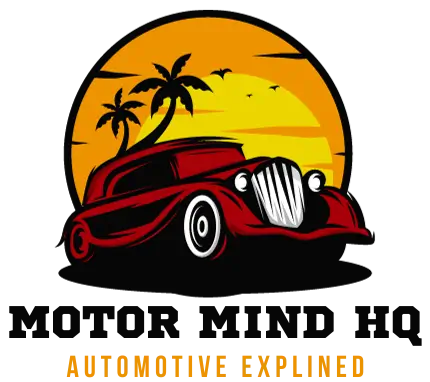

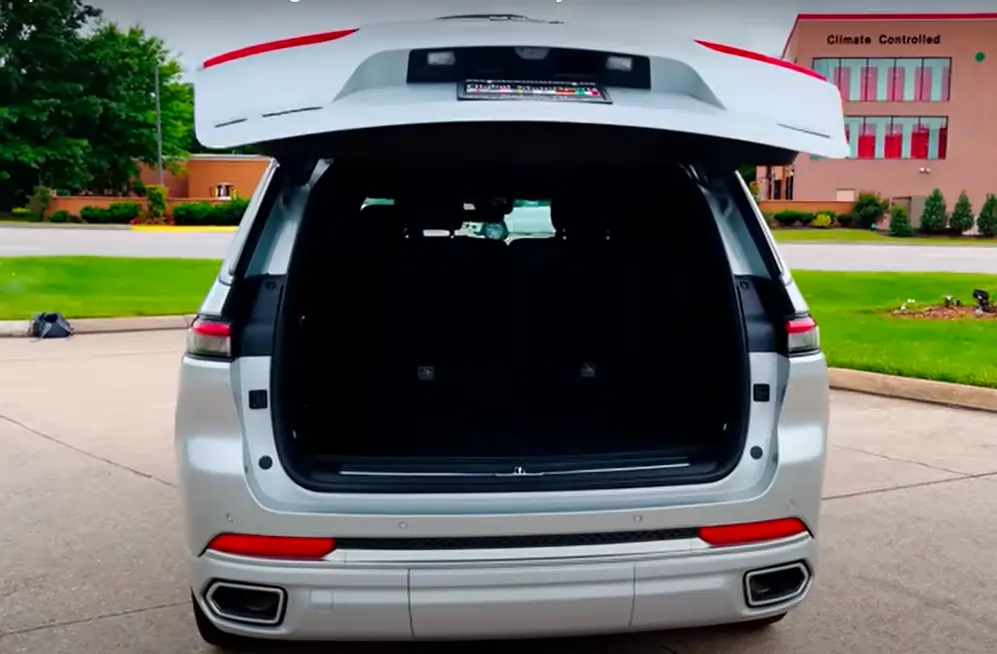
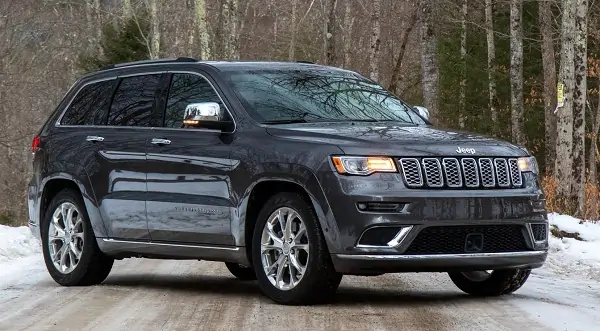

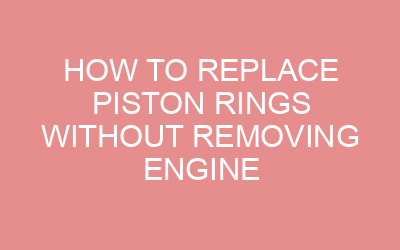


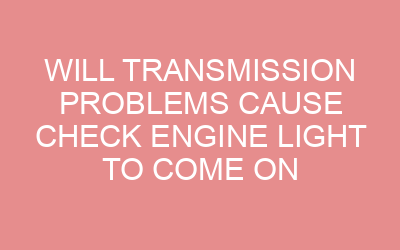





Leave a Reply